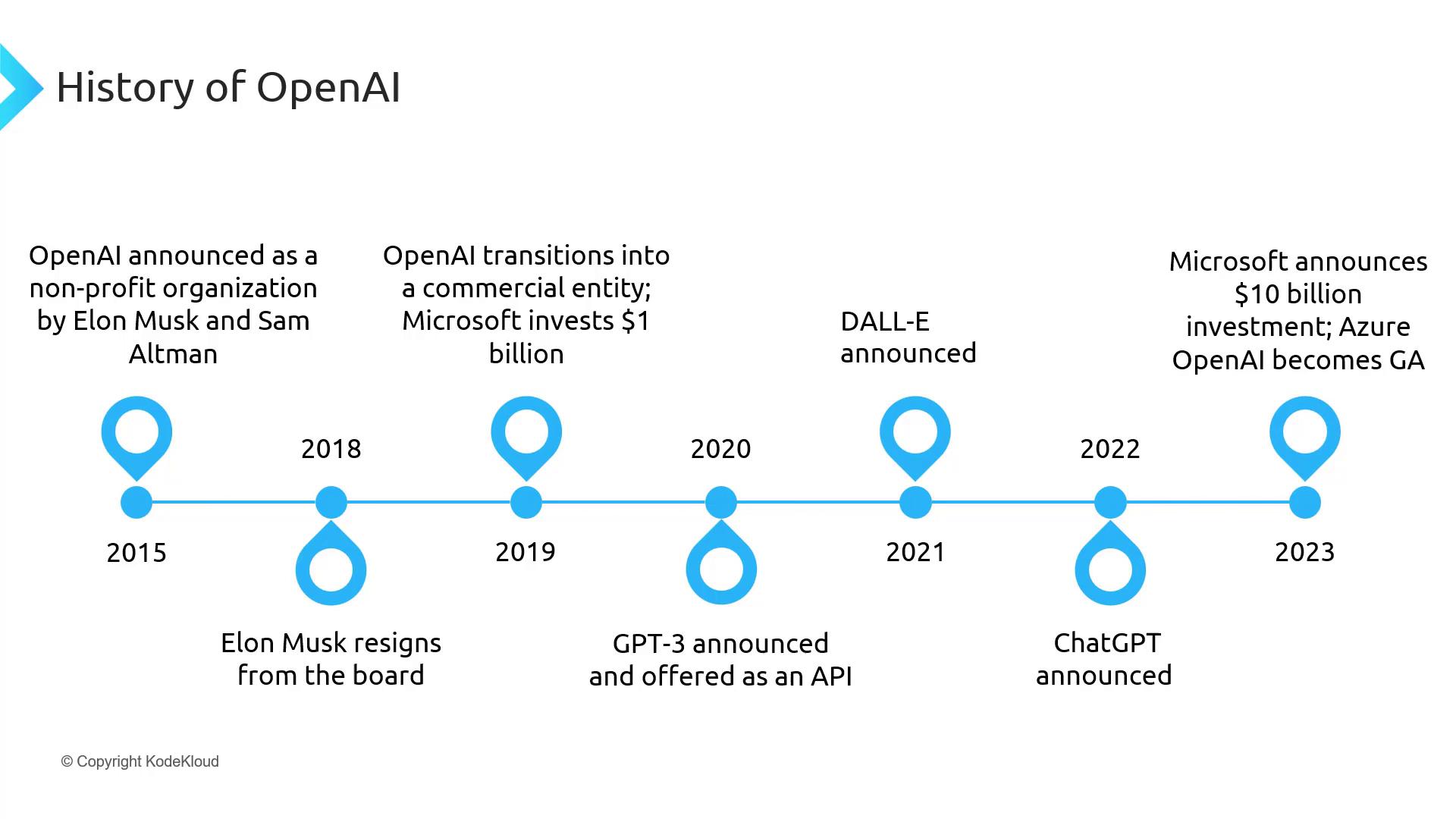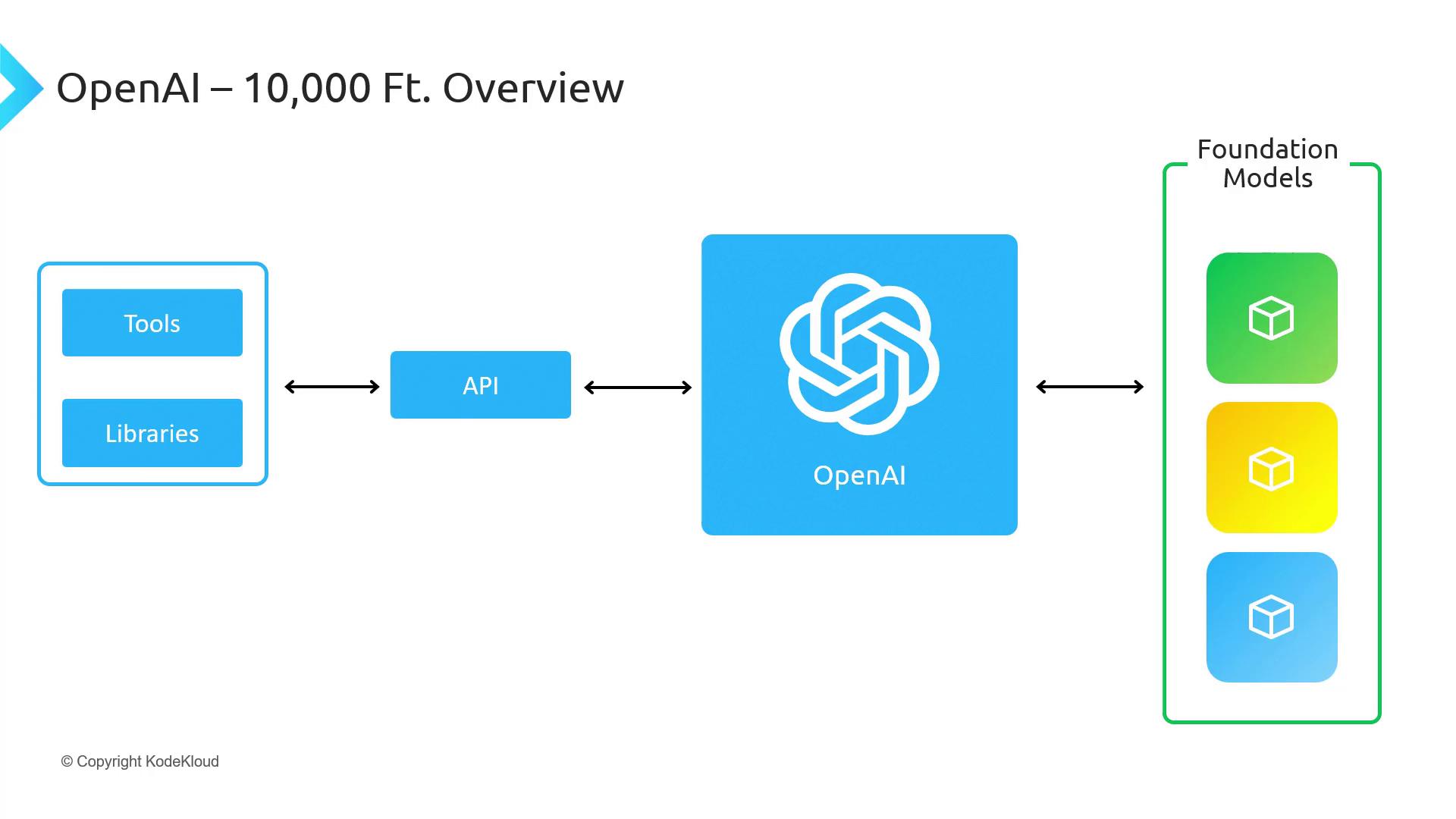Mastering Generative AI with OpenAI
Getting Started with OpenAI
What is OpenAI
In this article, we’ll trace OpenAI’s journey from its 2015 origins through its major milestones and provide a high-level overview of the OpenAI platform—covering its foundation models, services, APIs, and developer tools.
Evolution of OpenAI
OpenAI began as a non-profit in December 2015 with a mission to ensure that artificial general intelligence (AGI) benefits all of humanity. Since then, it has evolved into a leading provider of generative AI services.
| Year | Milestone |
|---|---|
| 2015 | Founded by Elon Musk, Sam Altman, Greg Brockman, and others as a non-profit AI research lab. |
| 2018 | Elon Musk resigned from the board, citing potential conflicts of interest. |
| 2019 | Converted to a “capped” for-profit entity and secured a $1 billion investment from Microsoft. |
| 2020 | Launched GPT-3, its first large-scale language model, accessible via a hosted API. |
| 2021 | Introduced DALL·E for text-to-image generation. |
| Late 2022 | Released ChatGPT, a conversational AI powered by GPT series models. |
| Early 2023 | Received an additional $10 billion commitment from Microsoft and expanded availability on Azure. |

Note
OpenAI’s shift from non-profit to for-profit aligned incentives for scaling infrastructure and delivering enterprise-grade AI services.
High-Level View of the OpenAI Platform
At its core, OpenAI provides generative AI as a service, enabling developers and organizations to integrate advanced models into applications. Below is a breakdown of the primary platform components:
| Component | Purpose | Examples / Tools |
|---|---|---|
| Foundation Models | Pretrained, large-scale neural networks for language and vision tasks. | GPT-3, DALL·E, ChatGPT |
| Services Platform | Handles API orchestration, model versioning, user authentication, and security. | Rate limiting, billing, fine-tuning pipelines |
| API Layer | RESTful edge endpoints for easy integration into any environment. | POST /v1/completions, POST /v1/images/generations |
| Developer Tools | SDKs, CLI, and code samples for rapid prototyping and deployment. | OpenAI Python SDK, Node.js client, examples on GitHub |
Applications can call the OpenAI API directly or use the official SDKs to streamline authentication, manage requests, and process responses in your preferred language.

Links and References
- OpenAI Official Site
- GPT-3 Documentation
- DALL·E Overview
- ChatGPT Blog Post
- Microsoft Azure OpenAI Service
- OpenAI Python SDK on GitHub
Watch Video
Watch video content